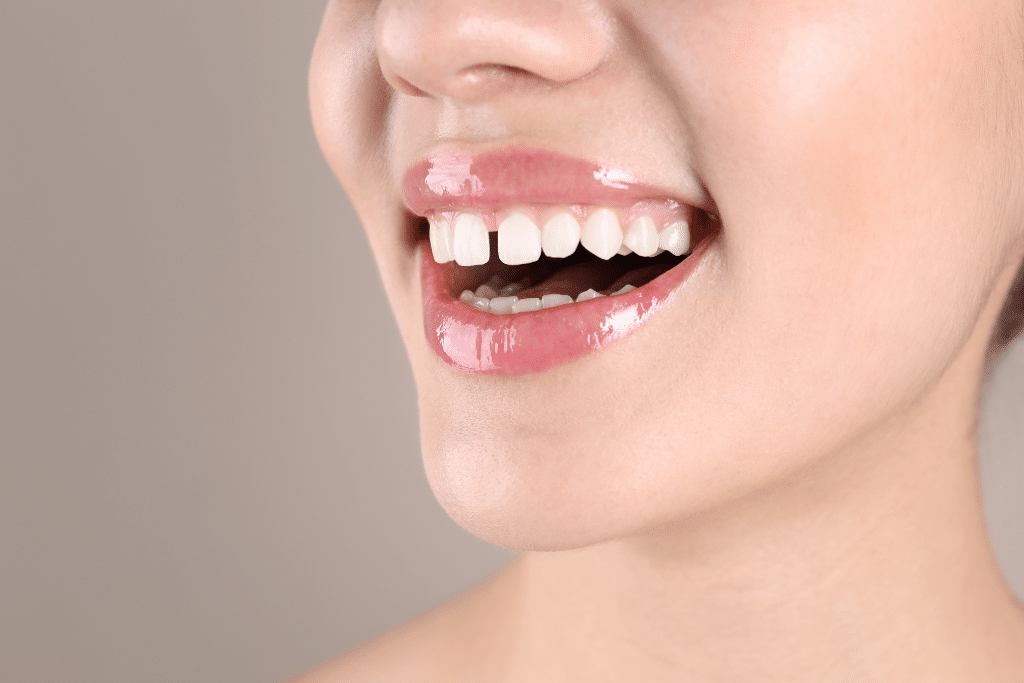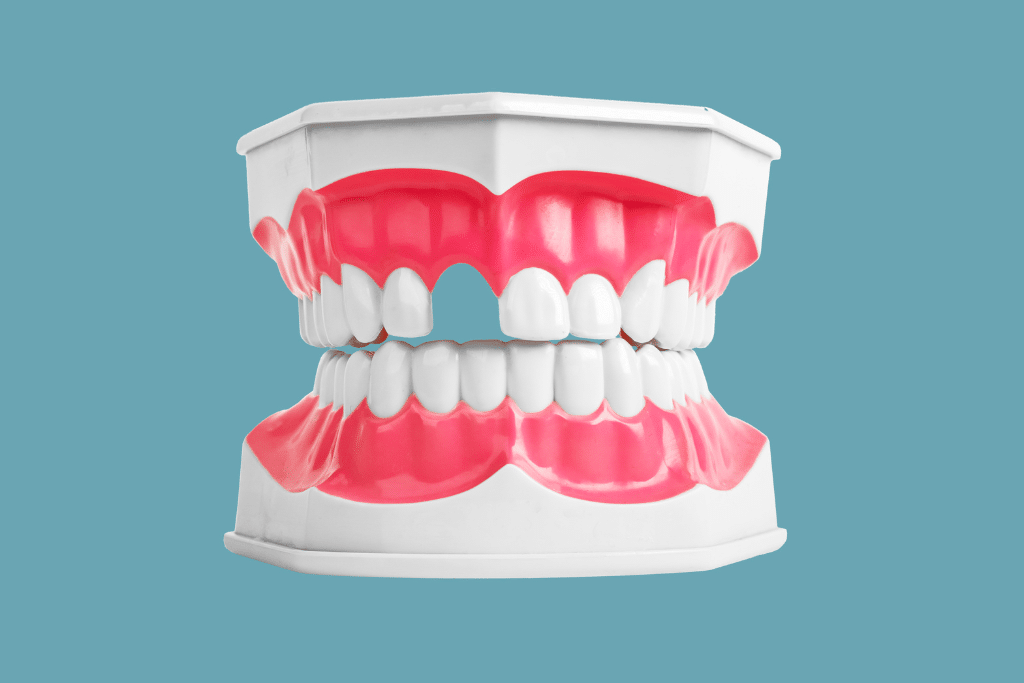
Your oral health is crucial to your overall health and self-esteem. One of the most common dental problems people face is gaps in their teeth. Those gaps, also known as diastema, can be caused by many things and affect the function and appearance of your smile. This blog will examine how to close teeth gaps and the causes, health implications, and treatment options for a more confident and straighter smile.
Understanding Teeth Gaps
What are Teeth Gaps?
Teeth gaps, or diastema, are spaces between teeth that are often most noticeable between the two upper front teeth. Teeth gaps tend to occur anywhere in the mouth and vary in size.
What is the main cause of diastema?
There are many causes of teeth gaps, including missing or undersized teeth, which can cause adjacent teeth to shift and create gaps. Thumb sucking in childhood is another common cause, as the repetitive pressure can push baby teeth apart. An oversized labial frenum, the tissue that connects the upper lip to the gum, can also create gaps. Incorrect swallowing reflexes and tongue thrusting can push the teeth and create gaps over time. Advanced gum disease can also lead to bone loss and the loosening of teeth, which can create gaps.
Health Implications of Missing Teeth
Oral Health Concerns
Teeth gaps can lead to many oral health problems. They can make the gum line more prone to gum disease, including severe gum disease, worsening the problem by causing bone loss and loosening adjacent teeth.
Functional Issues
Functionally, gaps between your teeth can affect biting and make chewing less efficient. They can also lead to speech difficulties, particularly if the gaps are between the front teeth, affecting how you pronounce certain words.
Aesthetic Concerns
From an aesthetic point of view, many people feel self-conscious about their gapped teeth and want perfectly straight teeth for a more beautiful smile. This can affect self-esteem and confidence and impact social and professional life.
Which treatment is best for diastema?
Orthodontic Treatments
Orthodontic treatment is the most common way to close gaps. Traditional braces are effective in moving teeth into position over time. Clear aligners are another less noticeable and more comfortable alternative to braces.
Dental Procedures
Dental Bonding
The dental bonding procedure involves applying a bonding material to the teeth to close small gaps. This is a quick and cost-effective solution, ideal for minor gaps.
Porcelain Veneers
Porcelain veneers are thin shells that cover the front of the teeth. They are an aesthetic solution for severe cases and large gaps. They are custom-made to fit your teeth and look natural.
Dental Bridges
A dental bridge can replace missing teeth and close gaps caused by a missing tooth. This involves anchoring a false tooth between two crowns on adjacent teeth.
Dental Implants
Dental implants are a permanent solution for missing teeth. They are a stable, durable option that looks and functions like natural teeth.
Other Treatments
Gum disease treatments are necessary if the gaps relate to gum health issues. Midline diastema, with gaps between the two front teeth, may also require surgical or orthodontic intervention.
Preventing and Managing Teeth Gaps
Genetic diastema cannot be prevented as it’s inherited from your parents or grandparents. However, you can minimise the risk of infection-related diastema by practising good oral hygiene and visiting your dentist for regular cleanings and checkups.
Oral Hygiene Practices
Good oral hygiene is key to preventing gum disease. Brushing, flossing and professional cleanings will keep your gums healthy.
Regular Dental Visits
Regular dental checkups are important for early detection and prevention of dental problems. One visit to a dentist can help identify problems before they become severe and advise you on how to maintain oral health.
Protect your teeth
If you play contact sports such as rugby, football, or hockey, wearing a mouth guard to protect your teeth from injury and prevent gaps is a good idea.
Choosing the Right Treatment
Factors to Consider
When considering diastema, several factors should be considered: the size of the gap (large gaps vs. small gaps), underlying health reasons like gum disease or bone loss, aesthetic preferences, and the cost and duration of treatment.
Consulting with a Dentist
Consult a dentist to determine your best treatment plan. A personalised approach will ensure your needs and goals are met.
Have Diastema? – Book an appointment with Fulham Road Dental
Diastema, the space between two teeth, is most noticeable between the upper front teeth and is a problem for many wanting to improve their smile. Fulham Road Dental offers a range of treatments to sort this out, both aesthetically and functionally. Treatments include orthodontics (braces or clear aligners) to move teeth gradually, dental bonding with tooth-coloured resin to fill the gap, veneers to cover the front of the tooth, and custom-made crowns to improve shape and alignment.
Booking is easy with us, too. You can book online or call the practice to schedule a consultation. At your first visit, the dentist will assess your teeth and recommend a treatment plan. Diastema gives you more confidence in your smile and helps your oral health by reducing the risk of cavities and gum disease.
Diastema FAQ’s
How do you fix a teeth gap naturally?
Fixing a teeth gap naturally at home is not recommended and can be dangerous. See a dentist or orthodontist for a professional evaluation; treatment is best. They can give you safe and effective options to address gaps between teeth.
How do you floss without causing gaps?
Flossing correctly is key to maintaining dental health without causing gaps. Use about 18 inches of floss, winding most around your middle fingers, and gently slide it up and down between your teeth. Curve it into a C shape against each tooth and slide it under the gumline without snapping. Choose the right type of floss for your teeth, like waxed floss for tight spaces, or consider alternatives like water flossers or interdental brushes. Consistent and gentle flossing will prevent plaque buildup and keep your gums healthy.
Do gaps in teeth get bigger with age?
Yes, gaps in teeth can get bigger with age due to:
- Gum Recession: As gums recede with age, they can create gaps or make existing gaps more noticeable.
- Teeth Shifting: Teeth shift over time, especially if tooth loss or bite alignment changes.
- Bone Loss: Bone density in the jaw decreases with age, and teeth become loose and shift.
- Dental Issues: Periodontal disease and other dental issues can widen the gaps between teeth.


